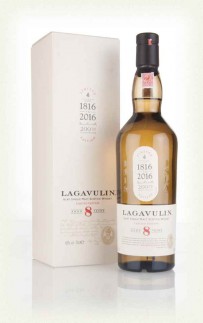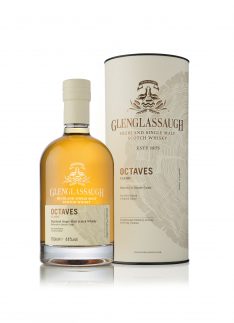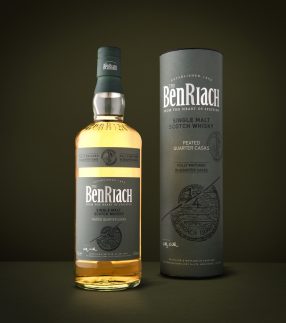29.06.16
Islay, Glenglassaugh, Benriach, More Whisky with Food and Oh, Yes …..Europe!
Well, Feis Ile (Islay’s annual festival of whisky and music) has come and gone for another year. I had a fun time preparing for my annual dinner at the Port Charlotte Hotel. This year’s dinner saw excellent food yet again and the whisky pairings I chose to go with each course went down very well with the diners. Relief! You can do so much preparation and it can go awry on the night if an ingredient has been added to a dish at the last minute or the chef forgot to mention it in advance. If you try that yourself, make sure you get a list of all ingredients upfront, as I always try to do. Anyway, here is the menu with whisky matches that we all enjoyed this year:
The Port Charlotte Hotel and Restaurant
Islay Whisky Festival Dinner
Thursday 26th May 2016
with Caroline Dewar

Canapés
Lagavulin 8 Year Old 200th Birthday Whisky
><
Poached Lagavulin king scallop & Islay langoustine mousse, mango and tarragon mousseline
Bowmore Gold Reef
><
Essence of beef tomato & lavender soup, parmesan and potato quenelles
Laphroaig 18 Year Old
><
Oven seared pheasant breast wrapped in pancetta, banana shallot & honey jam,
micro greens
Jura Diurachs’ Own 16 Year Old
><
Raspberry sorbet
><
Oven cooked saddle of Argyll venison wellington, wild mushroom duxelle,
poached prune& port jus
Ardbeg Uigeadail
><
Bitter chocolate & pecan nut tartlets, white chocolate & vanilla bean ice cream
Bunnahabhain 18 Year Old
><
Tea or coffee served with homemade whisky tablet
Octomore 7.4 from Bruichladdich
On the subject of whisky with food, there is a new book out from French food and whisky writer, Martine Nouet. Martine lives on Islay these days. Unlike me she also tends to create recipes involving whisky whereas I concentrate solely on the matches. Her new book is called “A Table – whisky from glass to plate”, ‘A table’ being the French cry to summon all to the table when a meal is served. Martine looks at the art of pairing whisky with food, the seasons and what we might eat during each one; it covers a list of ingredients with which you can pair whisky or use in cooking them and then a raft of recipes for canapés, starters, mains and puds some of which include whisky and all of which have whisk(e)y matches to drink alongside. I use the “e” version too as some of her matches are Irish and American. We may not agree on everything but that’s part of the fun as you may have other suggestions or feel inspired by Martine’s suggestions to try certain others she doesn’t list. The book is beautifully illustrated with mouth-watering photography. I haven’t yet had time to try any of the recipes and pairings but I certainly intend to. The book is a fine creation from someone with a fierce passion for whisky. It’s available online and from good bookshops at £19.99 (hardback).
While I was on Islay I was to interview the renowned Jim McEwan for Whisky Advocate magazine in the US for an upcoming edition. Easy to do as you wind Jim up with the questions and he just talks for 90 minutes and all great material. The hard part is whittling it down to all the relevant stuff and then you still find you have too many words!
I’ve recently tasted a few new expressions from BenRiach Distillers who are of course, recently bought over by Brown Forman from the USA. There were two Glenglassaugh Octaves – these are small casks about one eighth the size of a butt and one BenRiach from a quarter cask, another small barrel. The point being that a smaller cask means the liquid inside has more wood contact – and you can tell. The first was Glenglassaugh Octaves Classic- tried first as it isn’t a peaty one. It’s at 44% abv and not chill-filtered or coloured. A lot on the nose here – fruity with some oak, pear and acetone, coconut and sultana then more dried stone fruit, warm butter, marshmallows and, left a little longer, more butter, wood and light fruitcake sweetness with a touch of toffee (more as it opens out). On the palate there’s a little lusciousness and mouth-coating with light dried fruits, some oak vanilla and toasted oak; creamy with some residual sweetness, heathery, dry at the edges of the tongue with licorice and wood tannins.

The second one was quite a contrast being a peaty version, also at 44%. Peaty and with engine oil on the nose, hot cooked barley but also a sweet note – a bit of butterscotch and soft candy. With water, some damp woodland, a bit of brown sugar then more wood and smoke, dying embers and char. A little oily and mouth-coating on the palate, this has peat smoke and charred wood, heavily toasted barley plus some pepper and mouth-drying astringency, a touch of oil and herbs.
The Benriach Peated Quarter Cask is obviously also a peated expression and at 46% abv. It’s relatively pale in colour – maybe silver gilt rather than 18ct gold! Nose was a bit closed at first. It’s peaty and smoky but not overwhelmingly so. Heather and some dried fruit sweetness. More smoked fish with water but richer and fruitier also with more oak. Then some pear drops and eau de cologne. Some youthful notes. To taste, his one is smoky, peppery and quite fiery (in a nice way). Rich toast and char bitterness. Bitter cherry and some oak. The sweetness on the nose is, for me, less evident on the palate but there are some lovely walnut aromas. Some licorice in the finish.

Of the three my favourite was the Glenglassaugh Classic. Try them yourself and see what you think.
And so to Europe. Still reeling from that result and, as you might expect there will likely be considerable issues for Scotch Whisky. We currently enjoy better pricing in much of Europe than we do at home as taxes/duties are lower. Europe is the largest market for some of our world famous blends J&B and Ballantine’s not to mention other blends and malts. Higher prices there may mean reductions in sales and what if duty has to be increased here at home to offset a weaker economy? Not to mention the negation of so much hard work put in over the years by the Scotch Whisky Association not just in the EU but in other parts of the world to win a level playing field for Scotch. Duties increasing in some parts of the world is fodder for others to do same. Coming out of Europe could have far reaching consequences. Enough to turn you to drink…
Slainte Mhath,
Caroline
Comments